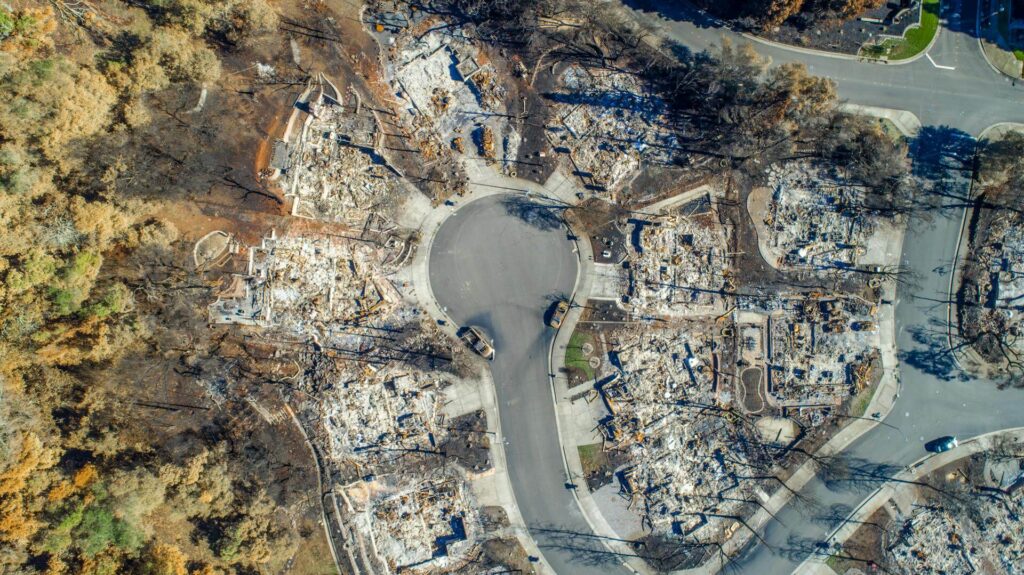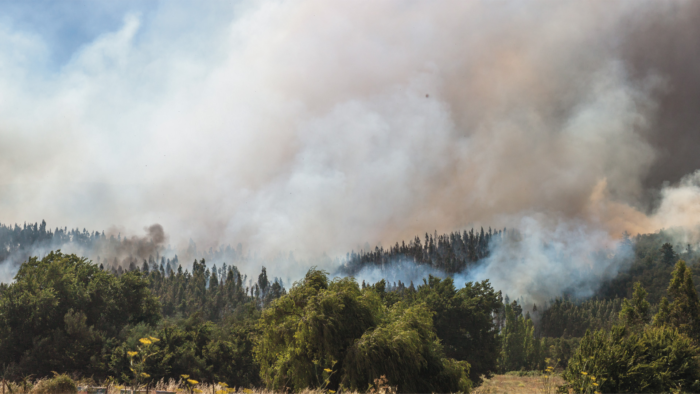When it comes to forest fires, we often focus on how to prevent them, and for a good reason. However, as not all wildfires can be prevented, especially now that they tend to be more frequent and devastating due to climate change, it’s important to understand their impact on communities, ecosystems, and human health. While some fires can offer certain environmental benefits, others can significantly damage local infrastructure and native vegetation, making post-fire restoration efforts crucial to help residents and businesses get back on their feet and spur new growth of plants and trees.
Table of Contents
ToggleHow Do Wildfires Affect Local Communities?
Forest fires that burn near populated areas can pose risks not only to the ecosystem but to the surrounding communities as well. It’s also worth noting that even if the flames themselves do not reach the buildings, the wildfire smoke can endanger people living miles away. For this reason, to save lives and health, authorities may decide to evacuate the area.
However, while we can move residents away from danger, it’s impossible to do the same for the infrastructure, businesses, and residential properties. If a wildfire cannot be contained, it can severely damage homes and roads, as well as power, water, and gas supply infrastructure, among others. This, in turn, will slow down post-fire restoration and further disrupt the community by making it difficult for businesses to restart and residents to return to their homes.
Repairing infrastructure as soon as possible to ensure safe access to water, energy, communication, and transport is vital to rebuilding the community after a wildfire.
Returning Home After a Wildfire
While it may be tempting to return home right away, it’s important to wait for official announcements from local authorities. From damaged power lines to structural damage in buildings and air pollution, many risks can persist even after the flames are extinguished. Not to mention that fires can sometimes smolder underground for months. The entire area must be checked by the fire services before it’s deemed safe to return to.
Even after coming back, residents should exercise caution and watch out for potential threats and signs of re-emerging fire. At this stage, it may also be a good idea to gather evidence (e.g., photos) that can support your insurance claim.
What Are the Effects of Wildfires on Human Health?
Wildfire-related health issues are not limited to direct threats such as burns, injuries, and short-term symptoms of smoke inhalation. For many people, especially those with underlying health conditions, exposure to wildfire and smoke can lead to long-term respiratory, cardiovascular, or even psychological problems.
Smoke contains harmful particles, gases, and sometimes even chemicals that can negatively affect your overall health. If you’ve been exposed to it, monitor your condition and consult a health professional if you notice any worrying symptoms.
What Are the Environmental Impacts of Wildfires?
Extreme wildfires can affect ecosystems in a number of ways. They are not only destructive in their own right, but can actually increase the risk of other disasters, such as flooding or mud and debris flows, due to post-wildfire soil being unable to absorb water at the same rate as before.
- Wildlife habitat damage: Each wildlife habitat is a complex structure that requires all its elements to be in place to function properly. Wildland and forest fires burn vegetation, kill and displace animals, and negatively impact the ecosystem even after the flames are gone. It may be difficult for some plants to regrow in post-fire soil and without vegetation, herbivores cannot rebuild their numbers, which, in turn, impacts carnivores.
- Air and water pollution: Wildfire smoke can significantly decrease the quality of air not only in the affected area but even miles away. The quality of drinking water is also at risk if harmful particles, ash, or chemicals get into the water system. Post-fire floods and rain can also carry debris flows and further contaminate local bodies of water.
- Soil erosion: Soil needs vegetation to protect it from the elements and stabilize it. When this protective layer is removed, the risk of soil erosion increases, which can lead to problems with water absorption and make it difficult for plants to regrow.
Can Wildlife Habitats Recover After Wildfires?
Some plants and animals have evolved to use fire to their advantage. These species can be seen in burned areas within days and weeks after a wildfire, making it seem as though nature is quickly going back to normal. However, it can take months or even years for the entire ecosystem to recover, especially in regions affected by climate change.
What Does Post-Fire Restoration Involve?
Post-fire restoration is a process that aims to help the environment and communities return to their pre-fire condition as much as possible. But for such efforts to be effective, they need to match local needs to support not only the recovery but also reduce future risks. Such projects may include but are not limited to replanting native vegetation, controlling invasive species, implementing fire prevention methods, soil stabilization, and repairing critical and recreation infrastructure.
Protect Your Property and Community With a Wildfire Detection System!
When prevention is impossible, a quick response is the key to saving lives, infrastructure, and properties in wildfire-prone areas. Our automatic forest fire and smoke detection system uses modern technology and AI to monitor the area 24/7 and notify you of any potential threat. Contact us to learn more – we’ll be happy to answer your questions!



